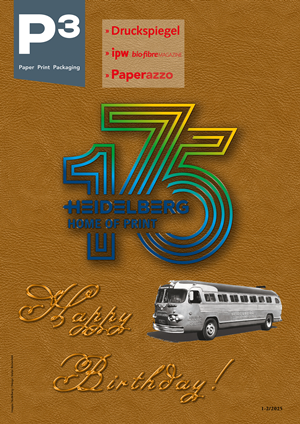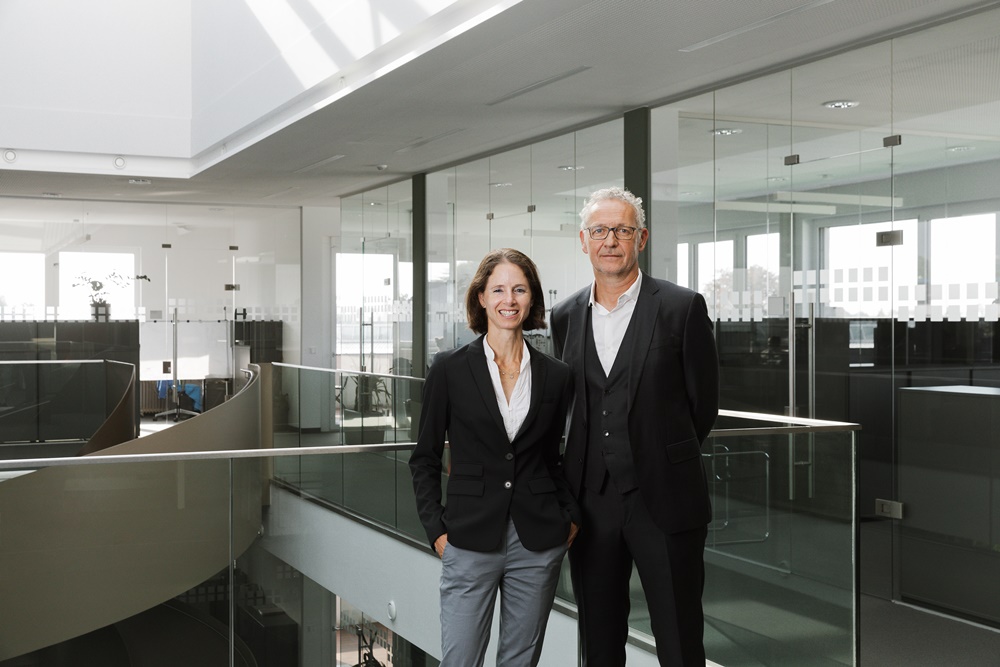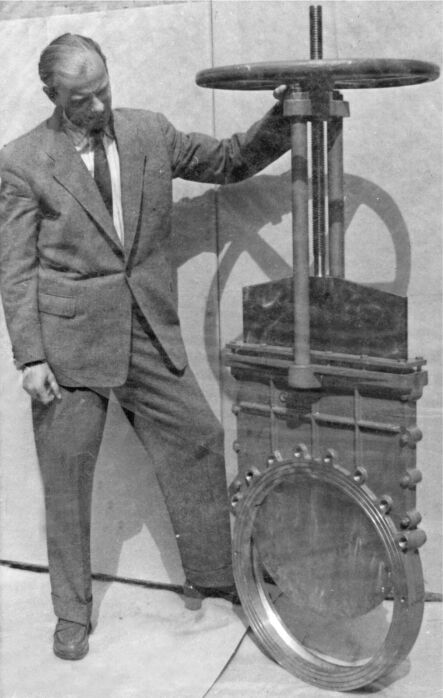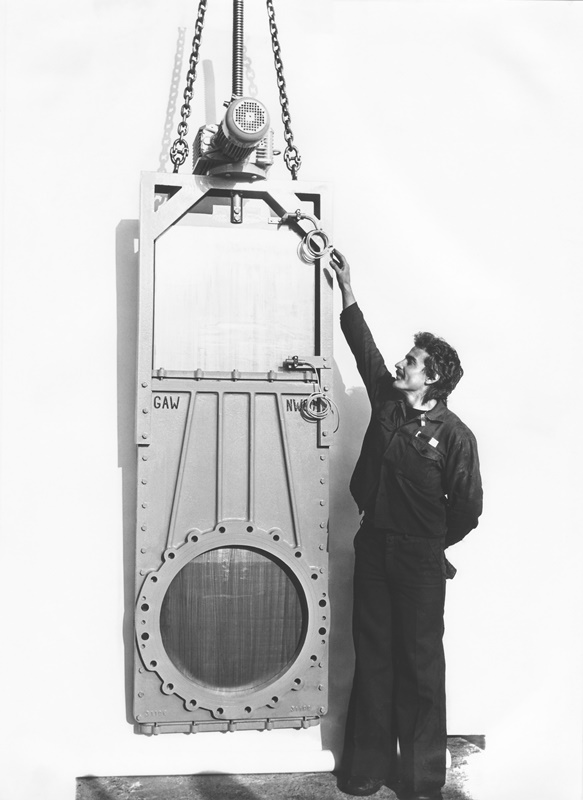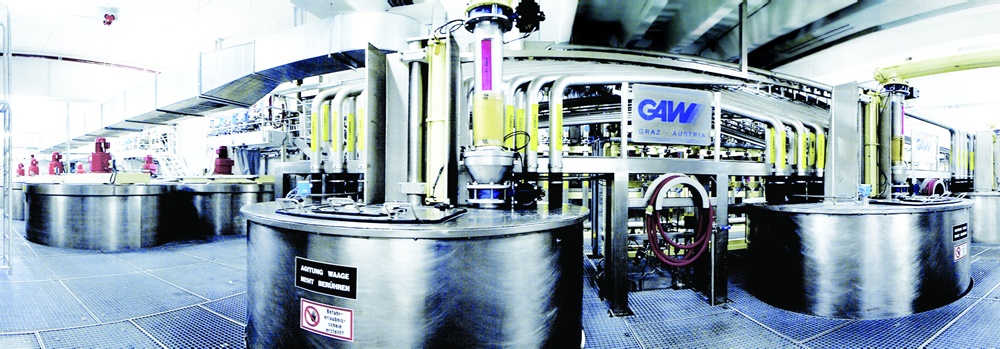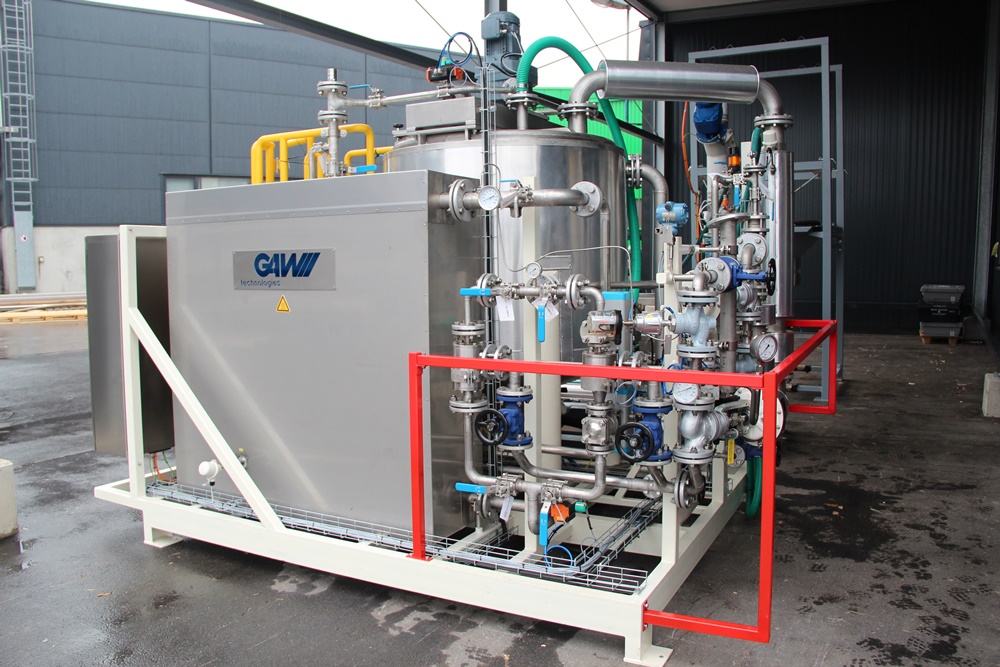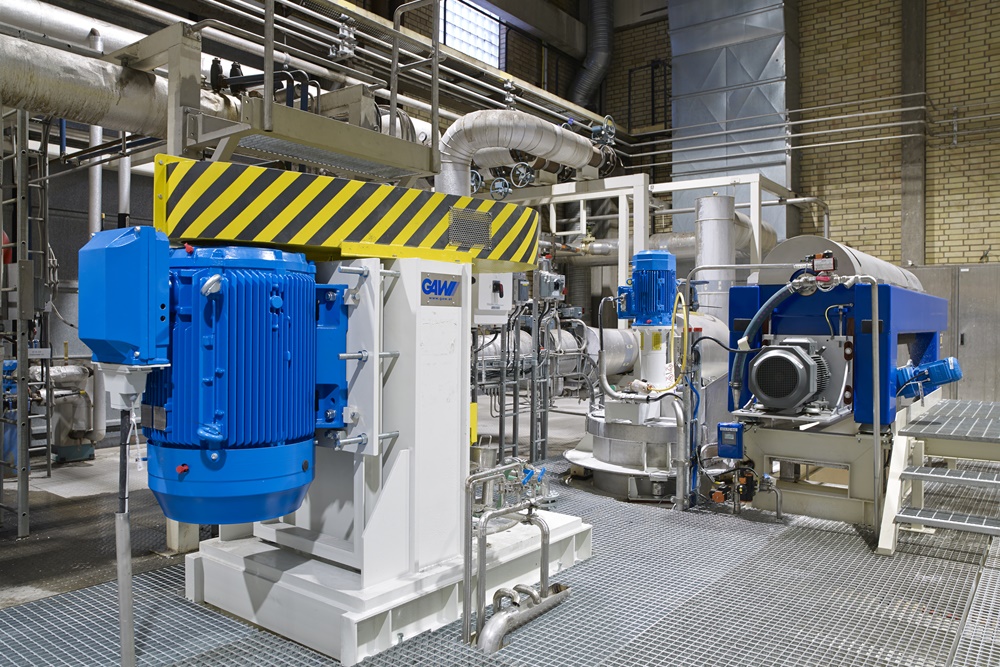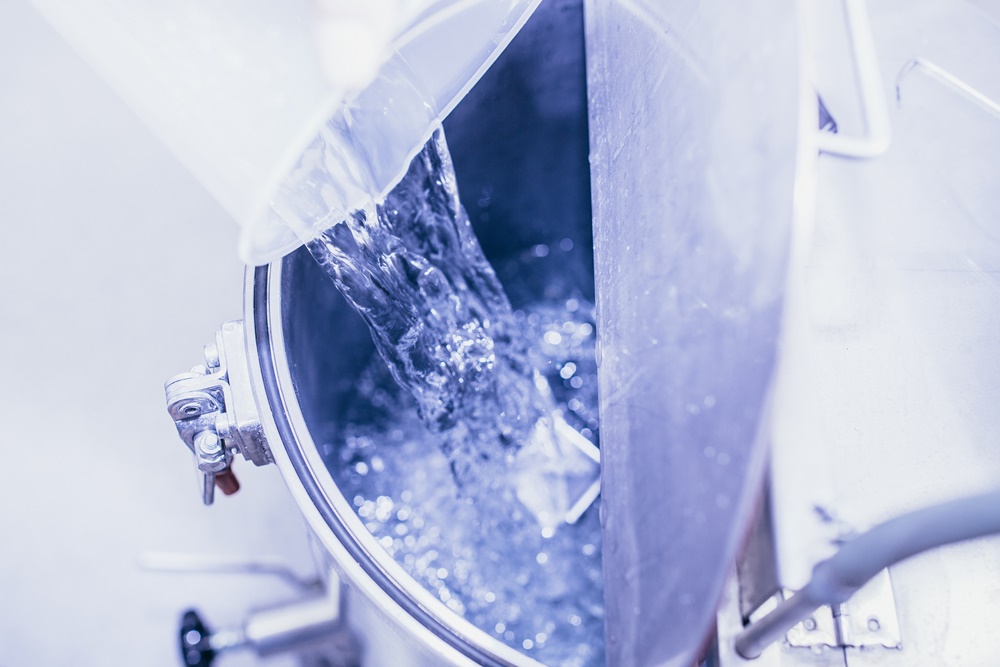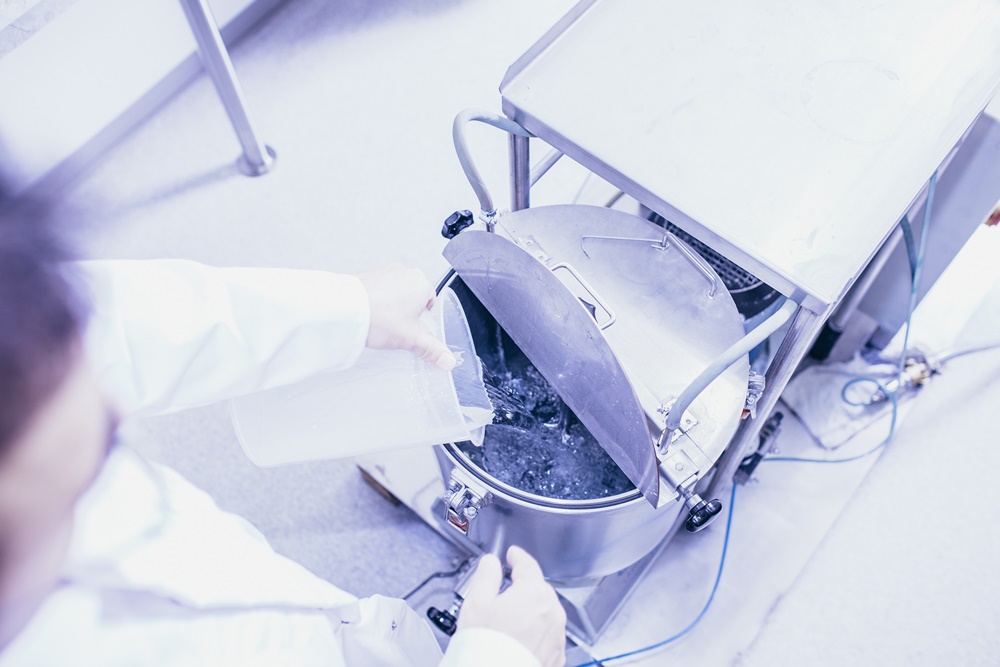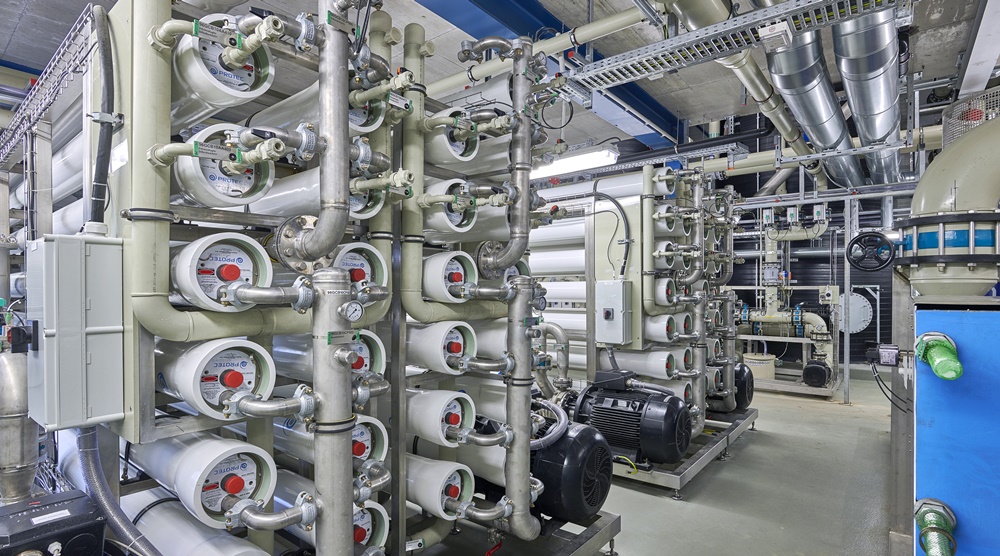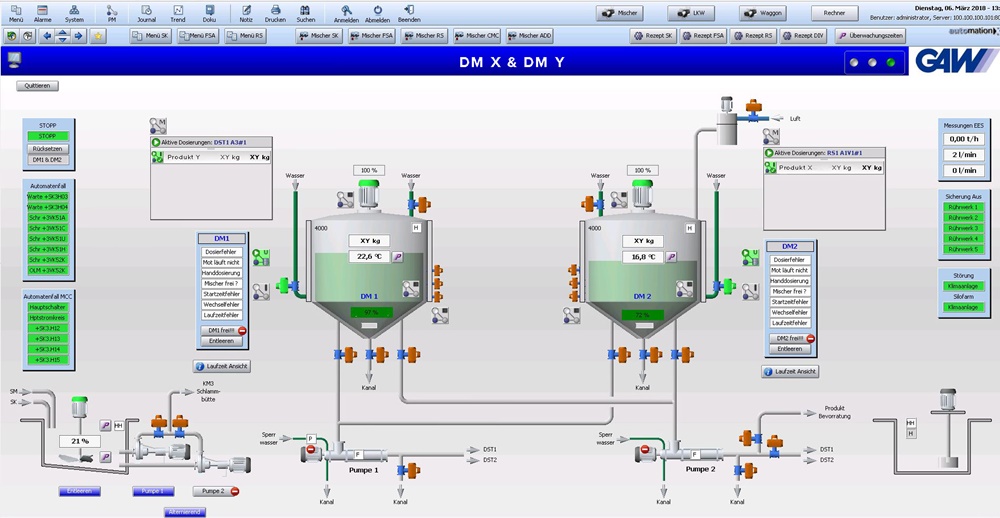P3 7-8/2021 en
GAW Technologies: 70 Years
A Tradition of Innovation
Companies & Markets
Entrepreneurial courage and an all along strong culture of innovation are the ingredients of the 70-year success story of GAW technologies. The Austrian family company, which was once founded in a garage, has built a strong brand in the paper industry within a very short period. Today it has become a dispensable and reliable technology partner in the treatment of chemicals, starch, coatings, wastewater and process water as well as automation and digitization.
Nina Pildner-Steinburg and Wolfgang Senner, CEOs.
When Erhardt Pildner-Steinburg, born in 1912, founded the “Grazer Armaturen Werk” in 1951, he probably had no idea that his company would evolve into an export-oriented global business over time. The success story began in a garage in Graz, Austria. Erhardt Pildner-Steinburg employed five people when he initially produced interchangeable and V-belt pulleys for woodworking machines, but also feeder and valves for pulp and paper mills.
Soon it was not enough for Pildner-Steinburg to manufacture only valves and fittings. He was mostly interested in the entire scope of work and so he began to develop chemical processing systems for the production of paper. An order from the Welser paper factory in 1956 gave the starting signal for the company's path to success. Further orders from Mayr-Melnhof and Neusiedler AG followed and laid the foundation for the beginning of the rise of the - then still young - company in the plant engineering and construction sector. The first systems had successful start-ups and Pildner-Steinburg, equipped with a corresponding pioneering spirit, pushed the implementation of his ideas into marketable products with systematic meticulousness.
Austria is not enough
As early as 1960, companies from abroad began to become aware of GAW. The first cross-border order came from the Stremska Mitrovica paper mill in former Yugoslavia. And the list of countries was getting longer and longer: exports followed from Iraq to Sri Lanka, from Italy to the USA, from Portugal to South America. GAW was entering new sales markets on almost all continents of the world at a time when for most people in Austria holidays on the northern Italian Adriatic beaches was still considered as a sign of ultimate internationality.
This internationalization continued, after the early death of Pildner-Steinburg in 1974, under the management of his two sons Jochen and Jörg. With the establishment of subsidiaries, the company's global presence systematically expanded. First in the United States of America and Canada, then in South Africa. The geographic expansion continued into the Far East, particularly to China, in the 1990s. Brazil and India followed, and hundreds of reference projects in almost all parts of the world speak a clear language: a strong local presence creates the basis for really understanding the customer, being able to interact closely and thereby earning the highest level of trust.
The art of engineering and innovative power lead to a Hidden Champion
Like other successful family businesses, GAW is characterized by a high level of innovation since its origin. By consistently broadening the product range, Pildner-Steinburg very soon secured the market position in the processing technology sector and his sons subsequently pushed the company's development further to become a provider of complete turnkey systems. In the second half of the 1990s, GAW knew that the plan had worked out: KNP Leykam (today Sappi Gratkorn) made a large order for the at the time world's largest paper machine for the production of triple-coated wood-free paper. The scope of supply of turnkey equipment included a pigment processing system with storage and the auxiliary processing systems including storage, starch conversion system as well as the complete coating kitchen and working stations, and all systems were successfully put into operation.
It was also the first time that the self-developed ECO-R pressure filters as well as the Variable Shear Technology (called VST) were introduced to the market. These features are technologically remarkable and still “unbeaten” as well as in operation. The VST technology can be adjusted for all applications. It is based on a continuous adjustability of the rotor-stator overlap during operation and thus securing an optimal ratio between drive and shear.
Technologically knowing the customers world inside out
The R&D expenses of GAW reflect the high priority that innovations have always enjoyed at the company. Each year around 10% of the operating performance are spent on development work, mainly focusing on the reduction of the use of water, energy and raw materials in the customer's production process.
A strong example of how to achieve impressive resource savings are the GAW systems for processing starch. Especially when native starch is used – the so-called enzymatic starch processing. By combining two modes of operation in a very special way, it creates a customized starch size at the end of the modification process. This size includes the requested viscosity and molar mass distribution for the respective application - regardless of the starch type, starch temperature and solids content. Expensive raw material losses are no longer an issue, as the dwell time in the system can be set as required and is kept constant at all times, i.e. also during a stop or start of the system. Therefore, it is possible to run with almost no wastewater.
It is quite convenient, that these GAW systems are also available for rent and customers are happy to use them. On the one hand to bypass failures or bottlenecks in production, but on the other hand also when it comes to carrying out tests with new raw materials in a parallel mode.
In addition, a very compact modular system for heat recovery is also available: the patented Heat Recovery System ensures that the expansion steam (and the thermal energy it contains) is not escaping into the atmosphere unused after the boiling of the starch. The savings result in more than 50% of the energy required to inactivate the jet cooker.
Another patented innovation is the Coating Color Recovery System. This process for recovering coating colors does not only require 70% less energy than grinding fresh pigment. It also significantly reduces the amount of wastewater because the separated sewage water is completely returned to the process.
GAW implements a large part of the new developments in cooperation with customers directly at their mills. The GAW technical center in Graz is another possibility, especially for pilot tests and test series. The equipment includes all GAW key components, test systems and extensive laboratory material. Many of the innovations already mentioned as well as a lot of other ideas origin in these halls and were successfully brought to life.
A recent example is the research on a new process that is using cavitation for the preparation of starch. The focus of the project is the reduction of energy by minimizing the need for steam. At the same time, GAW researchers expect a significant saving of the required enzyme - accompanied by an improvement of the paper quality and greater variability in the operation mode range.
Thinking and acting long-term
In 2016, a generation change took place at GAW technologies. Since then, Nina Pildner-Steinburg and Wolfgang Senner have been leading the global technology company, which has earned a high reputation for its service, product and consultation quality as well as delivery reliability. The primary goal of the management is to expand the company, to make it stronger and to pass it on to the next generation. “Accordingly, our corporate strategy is positioned towards long-term organic growth based on a diversified and global business structure. Our success is based on the fact that our customers can be sure that we will still be there in 20 years,” specifies Nina Pildner-Steinburg. “With our broad portfolio of systems, products, services and digital solutions, it is our aim to continue to enthuse our customers in the pulp and paper industry as well as from the chemicals and composites segments,” adds Wolfgang Senner.
Some time ago the GAW water technologies business unit started to put a focus on the topic of water and wastewater treatment in the paper manufacturing process and was introduced in addition to the existing applications (in the field of fully automated processing and production of chemicals, starch and coating compounds as well as the grinding of calcium carbonate). The filtration and membrane separation processes for boiler feed water, process water and tertiary wastewater are tailored to the respective requirements. The consumption of the valuable resource water and thus the impact on costs and the environment are massively reduced.
100% recycled
Let's take a quick look away from the paper industry. In other words, what makes GAW successful? “We definitely act highly flexible and dynamically when the corporate environment demands it or if we see opportunities,” says Nina Pildner-Steinburg, “and we understand our technologies and processes so well that we can adapt them for use in other industrial segments within a very short time.”
For example, next year a hydrosulphite dissolving plant from GAW will go into operation at Renewcell, a young Swedish company that has developed a remarkable new recycling technology and is now building an industrial-scale textile recycling plant in Sundsvall. In the future, used cotton, denim, rayon and other cellulose fibers will be dissolved and 100% recycled to so-called Circulose® cellulose.
Growing with digitalization
Just as society, the economy and the world of work are changing because of digitization. Plant engineering and construction is also changing dynamically and in some cases fundamentally and at a faster pace, whereby the topic of digitization is not groundbreaking for this industry. The development that began decades ago is now simply moving forward with very large strides. The automation of the GAW systems found its way into the company decades ago, just as remote services have been standard for a long time.
“Today the direction of impact of our digital agenda lies in the enhancement of the existing product portfolio with those digital capabilities that offer our customers additional added value, as well as in the development of new digital applications for our traditional core markets,” emphasizes Wolfgang Senner. For the special requirements of pulp, paper and cardboard manufacturers, solutions based on data analysis already exist. The aim is to reduce energy consumption, to improve pulp and paper quality or to increase process safety. Among other things, barrier coating has a high priority and is an example for safety in the area of food packaging.
In this case, GAW uses its automationX®-MES product management system for product and batch tracking to plan and optimize the order data or to record, visualize and analyze the performance and quality data. If the customers want to bring the best out of their production facilities (minimizing raw material and energy consumption and at the same time increasing throughput and product quality by reducing fluctuations in critical process variables or correcting disruptions more quickly), appropriate APC solutions are used - for example in the areas of starch, wet end or drying, where steam savings of up to 6% can be achieved.
Nina Pildner-Steinburg is convinced that “the dynamic of technological change, which has so far shaped the history of GAW, will continue to be a formative element in the development of our company. Also in the digital age, nothing stands in the way of it. Especially not if you are lucky enough to be able to work with people who appreciate our climate of trust and openness between all hierarchical levels and departments. And this naturally has a positive effect on innovation.”
With a strong background
To conclude, let's look back in history once more. As already mentioned, a key entrepreneurial decision in corporate development was the path from a component manufacturer to a supplier of turnkey systems. But that was not enough: since the 1990s the owners have not only pushed forward the diversification of their company. Shortly after that, they also began to buy companies in other business areas, thereby deepening the structure of a family-run industrial holding company.
GAW technologies is now a proud part of the GAW Group, a global technology company group owned by the family Pildner-Steinburg. The portfolio of systems, products and industrial services serves eight essential markets in almost all regions of the world: paper, plastics, chemicals, transport infrastructure, building materials, food, medical technology and optoelectronics. Reason enough to look forward to the next seventy years full of action.
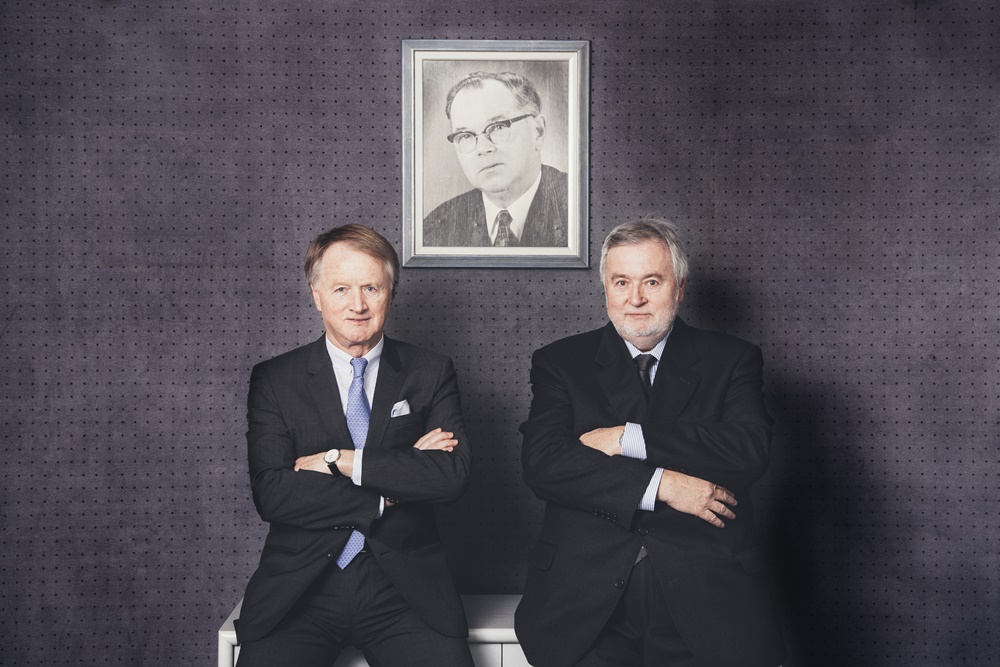
The owners Jochen und Jörg Pildner-Steinburg in front of a portrait of their father and company founder Erhardt.
Editor: sbr
Images: GAW Technologies

